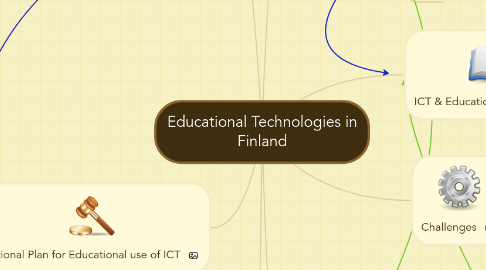Educational Technologies in Finland
создатель Päivi Palosaari-Aubry


1. Projects
1.1. FINNABLE 2020
1.2. SysTech
1.3. TravEd
1.4. OPTEK
1.4.1. well-founded and lasting solutions
1.4.2. models, processes and contents
1.5. ICTs at School's Everyday Life
1.5.1. new knowledge
1.5.2. new know-how
1.5.3. educational use of ICT
1.5.4. educational administration about ICT
1.5.5. pedagogical adaptations of ICT
1.5.5.1. teachers pedagogical knowledge
1.5.5.2. structural and pedagogical development of teaching
1.5.5.3. technological innovations and infrastructure
1.5.6. Finland to be one of the European leaders in the ICT use in education
2. Strategic policies and proposals for action
2.1. life-lasting learning
2.2. more resources
2.3. applying new innovative possibilities and technologies
2.4. teachers training
2.5. increased possibilities for studying ICT
3. National Plan for Educational use of ICT
3.1. implementation 2011 onwards
3.2. equal opportunities
3.3. up-to-date methods and tools
4. ICT & Society
4.1. Digital services
4.2. Education & school
4.2.1. PISA results
4.2.2. top level
4.3. Media
4.4. Work
5. Vision
5.1. Life-long learning
5.1.1. IT-skills
5.1.2. Doing things together
5.1.3. Part of the global community
5.1.4. Enthusiasm for learning
5.1.5. Media comprehension
5.1.6. Communication skills
5.1.7. Protection of privacy
5.1.8. Utilising social media
5.2. rebuilding Finland as a leading country
5.3. ICT as a resource for learning
5.4. the whole world with pupils reach
5.5. uniform information system
5.6. reduce racial prejudice through ICT
5.7. similar possibilities to all people
5.8. customizable education tools
6. Challenges
6.1. attitudes
6.1.1. age
